Why does pepper rot on a bush: identifying the cause of the problem and effectively saving our harvest
Bell pepper, popular with gardeners, belongs to the nightshade family. This tasty and healthy vegetable is prone to the same diseases as the rest of the family. As a rule, these are diseases of fungal origin associated with rotting of fruits and seedlings.
Consider why peppers rot on the bush, and what treatments and preventive measures are suggested.
The content of the article
Causes of rotting peppers on bushes
Consider the main types of rotting pepper on the bushes and the causes of such problems. This can be a violation of the temperature regime, too frequent or insufficient watering, a lack of any substances, and much more.
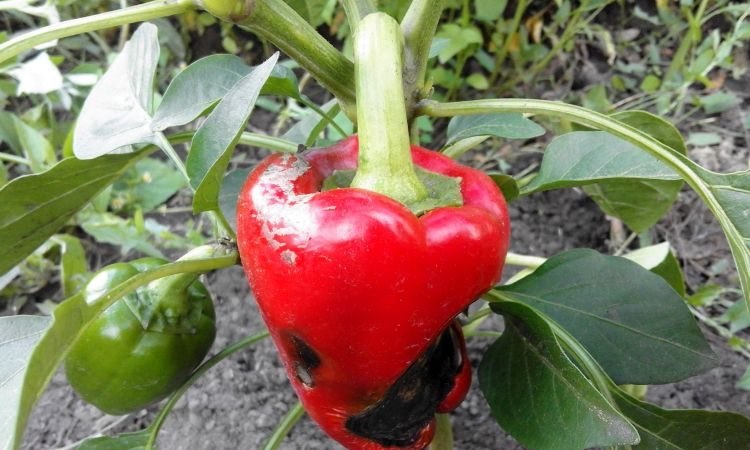
Vertex rot
If brown, dry spots appear on the tops of the fruits, it means that the peppers have become infected with apical rot. In the future, the spots grow, and the growth of vegetables slows down. It is forbidden to eat fruits affected by apical rot, as they can harm human health and have an unpleasant taste.
The main reason for the occurrence of this disease is non-compliance with the watering regime during the high-temperature period. The optimum air temperature for pepper is 18-22 ° С. If the temperature drops below the minimum limit, the frequency of watering must be reduced. If the temperature rises above the maximum limit, water the plants more often.
Another reason for the emergence of the vertex rot - lack of calcium, which occurs due to a lack of nitrogen in the soil.
Late blight
Why do peppers rot right on the branches? If spots of a dirty green color have formed on the fruits, which quickly spread throughout the plant and practically lead to the complete destruction of the bush, this is a fungal disease called late blight (late blight).
The leaves of the plant curl and wither. Fungal spores of phytophthora are spread throughout the entire area by the wind, and as a result, all plants in the garden are affected by this unpleasant disease. Phytophthora spreads easily in low-lying areas with stagnant water.
The main prerequisites for the onset of the disease are high humidity, poor ventilation and too dense planting of plants. An excess of nitrates and a lack of boron, copper or manganese in the soil can also lead to late blight.
It is interesting:
How effective is Trichopolum in the fight against late blight?
How and what to process tomatoes from late blight in a greenhouse.
Blackleg

The peculiarity of this disease is that it affects the seedlings with a fungus. A dying site appears near the root, which subsequently spreads to the root, as a result of which the entire plant dies.
To prevent the appearance of this dangerous fungal infection, it is recommended to soak pepper seeds in a solution of potassium permanganate before sowing. In the process of growing seedlings, it is necessary to constantly monitor: when diseased sprouts appear, they should be destroyed.
The main reasons for the infection of pepper sprouts with a black leg are contaminated soil, too close sowing of seeds, excessive watering, poor ventilation, non-observance of the required temperature and refusal to timely thin out the seedlings.
Anthracnose
The fungal disease of pepper anthracnose is formed on adult fruits during transportation and storage. Brown spots appear on the peppercorns with a dark border along the edge. Fruits of a red color are covered with a gray bloom.
This disease develops in conditions of high temperature (above 28 ° C) and high humidity. To prevent the spread of infection, it is necessary to harvest the fruit only in dry weather during the period of technical maturity. This means that the peppers should have a thick, healthy, green skin with an initial reddening. The optimum storage temperature for peppers is 3-4 ° C.
Spotted wilting
If brownish-yellow spots appear on the fruits and leaves of the pepper, similar to sunburn, and adult fruits have acquired a spotty color, this means that the plant is affected by spotted wilting. This disease is spread by aphids, thrips and cicada. Insects must be destroyed with insecticides, and the plant must be treated with Fundazol.
Gray rot
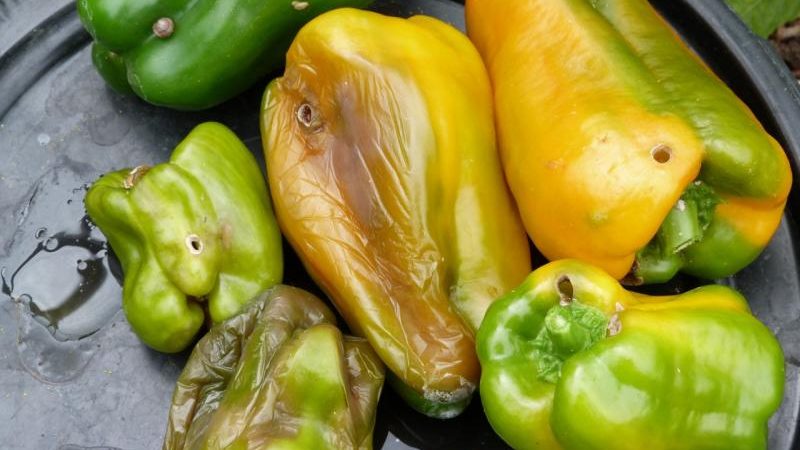
Gray rot is characterized by the development of gray mold fungi on the pepper. Symptoms: irregular brown wet spots on fruits and stems. Everything is affected - leaves, fruits and even flowers of plants. The disease of greenhouse plants spreads in conditions of high humidity and changes in daily temperature through mechanical damage to bushes and fruits.
In order to avoid the development of gray rot, it is necessary to carefully remove plant residues in the fall, avoid crowded plantings, ventilate the greenhouse, monitor the plants and remove diseased leaves, and maintain optimal humidity and air temperature in the greenhouse.
Conditions for the growth and development of healthy plants
It happens that after the invested labor in the country or in the home garden, rotting peppers are found on the bushes. Why is this happening? What to look for when growing plants in greenhouses and outdoors?
In the greenhouse
The main conditions for the successful cultivation of pepper in greenhouses are timely loosening of the soil and optimal air humidity (60%). The soil should be moist, but not waterlogged, the soil temperature in the greenhouse is 25 ° C. Important factors are regular ventilation of greenhouses and timely fertilization.
Saplings should be placed in a well-lit place, but avoid direct sunlight. The distance between plants should be 25 cm, and between the beds - 60 cm.
In the open field
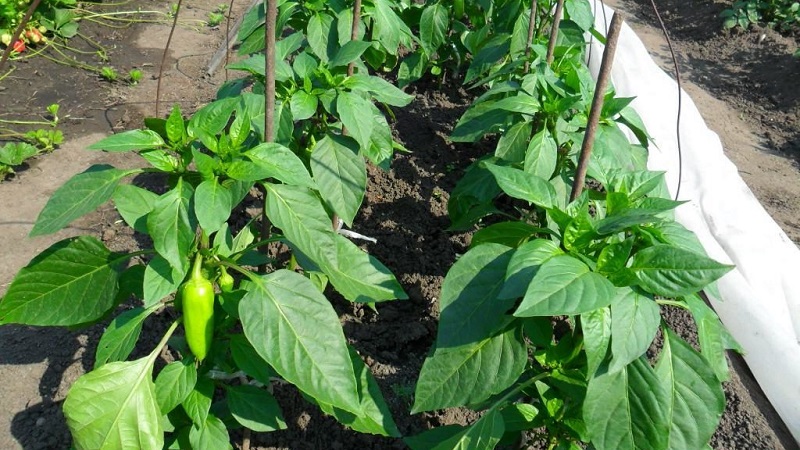
Pepper is a thermophilic tropical plant. Unlike greenhouses, it is difficult to ensure a constant temperature regime in open ground conditions. Before planting ready-made seedlings in open ground, you must choose a site with good illumination, not in a lowland, without waterlogging the soil. Before planting peppers, it is necessary to apply a complex of fertilizers, which include nitrogen, potassium and phosphorus.
Seedlings should be strong and healthy, not overgrown. Avoid over-watering your plants. Avoid crowding when planting, the bushes should have enough sunlight.
It is worth paying close attention to the forecasts of weather forecasters and not planting seedlings in case of possible frosts. The average daily temperature should be at least 20 ° C.
Watering in greenhouses and in the open field is carried out as the topsoil dries out. It is better to water a little, but often with water at a temperature of at least 20 ° C. The soil must be constantly loosened.
Important! In no case should fresh manure be used for fertilization.
What to do, how to save the harvest
In order to timely identify the problem, it is worthwhile to study the photos of the affected vegetables in advance. Having discovered in time that the plants are sick, all measures should be taken to save the harvest.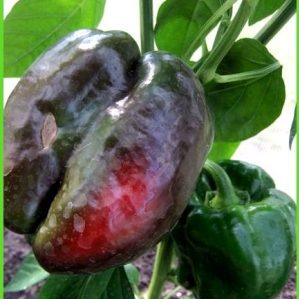
It is necessary to provide comfortable conditions for plant growth. Remove and burn the affected fruits and bushes. After that, you can start treating the peppers.
For the treatment of diseased bushes, top dressing is used. For its preparation, 2 tbsp is bred in a bucket of water. l. potassium carbonate and the same amount of calcium nitrate. A glass of this product is poured under each plant.
Systematically, once a week, plants are sprayed with a 1% solution of calcium chloride. In the case of top rot in an advanced stage, you will have to use preparations containing copper.
Drugs
To save the harvest, they resort to using chemicals. It is important to follow the instructions exactly when using it. A deficiency and an excess of chemicals are equally harmful to plants.
Attention! Any of the substances that will be a medicine for plants can be hazardous to humans, therefore it is necessary to work with gloves and wash your hands thoroughly after working on the site.
How to handle rotting vegetables? When treating pepper for fungal infections, drugs are used: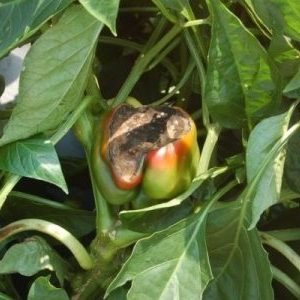
- "Alirin-B". For irrigation, 2 tablets of the drug are diluted in 10 liters of water, for spraying - 2 tablets in 1 liter of water. They are carefully processed. Repeat 2 more times with a week break.
- "Gamair" —Contains live bacteria. For irrigation, dilute 1 tablet in 5 liters of water, for spraying - 2 tablets in 1 liter of water. The treatment is repeated analogously to the "Alirin-B" preparation.
- "Oxyhom" - a fungicide that is used for spraying. 1 sachet of the drug is diluted in 2 liters of water. By analogy with this drug, "Ordan", "Ridomil", "Gold", "Fitosporin-M" are used. All of these drugs are effective in combating late blight.
To treat black-legged plants, sprinkle the soil around the bushes with a mixture of 1 cup of wood ash and 1 tsp. copper sulfate.
Traditional methods
Folk remedies for fighting pepper diseases have passed the test of time. These methods are no less effective and are actively used by summer residents along with chemicals.
"Fitosporin" can be replaced with 1% Bordeaux liquid or a solution of potassium permanganate diluted to a bright crimson color. Dilute it in a 10 liter bucket and process the leaves and peppers every week.
Reference. Before planting seedlings, many gardeners add dried crushed eggshells.
Diluted crushed chalk helps to cope with fungal infection of pepper bushes: 2 tbsp. l. for 1 liter of water. In this case, the main thing is not to overdo it, since with an excess of calcium in vegetables there will be a lack of potassium. This will delay the ripening of the fruit. Everything needs moderation and an integrated approach. An excess is just as unacceptable as a lack.
In the fight against top rot, many gardeners use skim milk: 1 liter of milk per 10 liters of warm water. Damaged peppers are sprayed with this remedy once a week. If you start fighting the disease in time, you can easily cope with it in 2-3 sprays.
Preventive measures
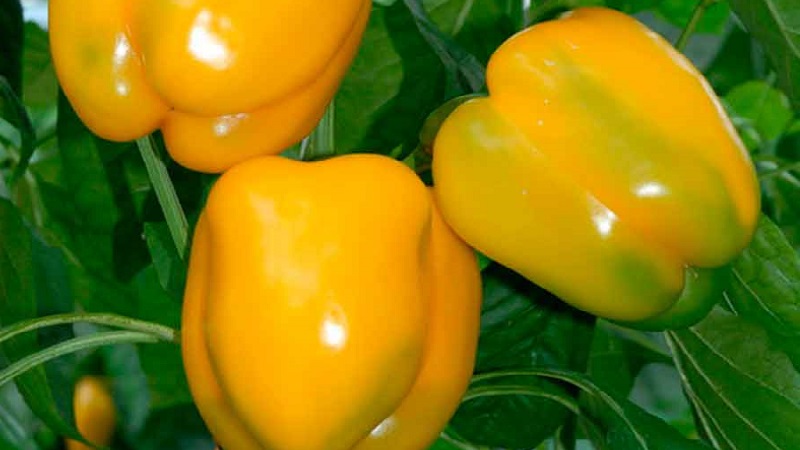
It is always easier to prevent a problem than to fight for the harvest later.Important measures for the prevention of fungal diseases are soil preparation for planting, sufficient fertilizing with mineral fertilizers, and ventilation of greenhouses.
Means for disinfecting soil and plant seeds should not be neglected. A good prophylaxis before planting will be annealing the earth before planting plants in it. If you put thick cardboard or foam rubber at the bottom of the box, this will protect the soil from rapid cooling.
Read also:
A selection of the best varieties of sweet peppers with a description.
The best sweet peppers for greenhouses in the Moscow region.
Conclusion
An exciting problem for gardeners is why peppers rot right on the branches. There are several reasons, but the main one is care errors that provoke the development of fungal diseases. Treatment does not always bring a positive result, so it is better to take preventive measures for pepper diseases in advance.